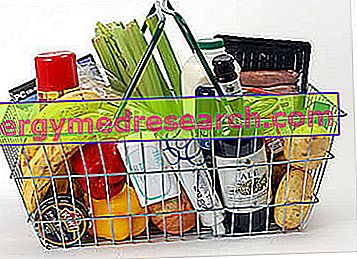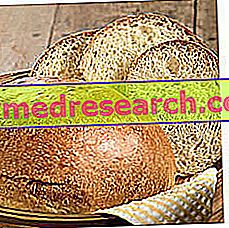
Preservatives are used to improve food preservation, preventing or slowing deterioration, and consequently increasing shelf-life times. Deterioration can be caused by chemical, physical and / or microbiological factors.
Not all the alterations caused by micro-organisms (bacteria, fungi or yeasts, molds ...) are to be considered harmful, because there are processes, triggered by some micro-organisms, useful for conferring a specific fragrance or a certain taste to the product (such as the maturation phases of wine and / or cheese).

When more preservatives are added to a food at the same time, the maximum dosage of the same decreases based on the number of preservatives used, that is: when two preservatives are used together, the maximum dosage allowed in food is halved for each substance; if, on the other hand, if three are used, the value is divided into three.
They belong to the category of preservatives:
- antimicrobials: they are used to limit and hinder the development of bacterial flora, which would form in the food causing alterations to the product;
- substances which are intended for other uses, but which nevertheless have a preservative action;
- antioxidants: they are substances that prolong the storage period of the food preventing its deterioration caused by oxidative processes (such as fat rancidity or color changes). Antioxidants are placed in the category of preservatives because they hinder the action of oxygen in contact with the product; together with the acidity regulators they are represented on the label with the word "E" followed by a number ranging from 300 to 399.
Preservatives must be indicated on the label like any other additive (they are usually shown at the bottom of the labels due to their low concentration percentage); those proper, are marked with the letter E followed by 3 digits between 200 and 299, or directly with the name of the preservative.
Within this numbering, the preservatives are further subdivided into 9 macro-groups shown below:
- SORBATI, from E200-209
- BENZOATI, from E210-219
- SULFURS, From E220-229
- FENOLI E FORMIATI, from E230-239
- NITRATES
- ACETATI
- lactates
- propionates
- OTHERS
| E200 | E201 | E202 | E203 | E210 | E211 | E212 | E213 |
| E214-E2119 | E220 | E221 | E222 | E223 | E224 | E225 | E226 |
| E227 | E228 | E230 | 231 | E232 | E233 | E234 | E235 |
| E236 | E237 | E238 | E239 | E240 | E242 | E249 | E250 |
| E251 | E252 | E260 | E261 | E262 | E263 | E270 | E280 |
| E284 | E285 | E290 | E296 | E297 |




